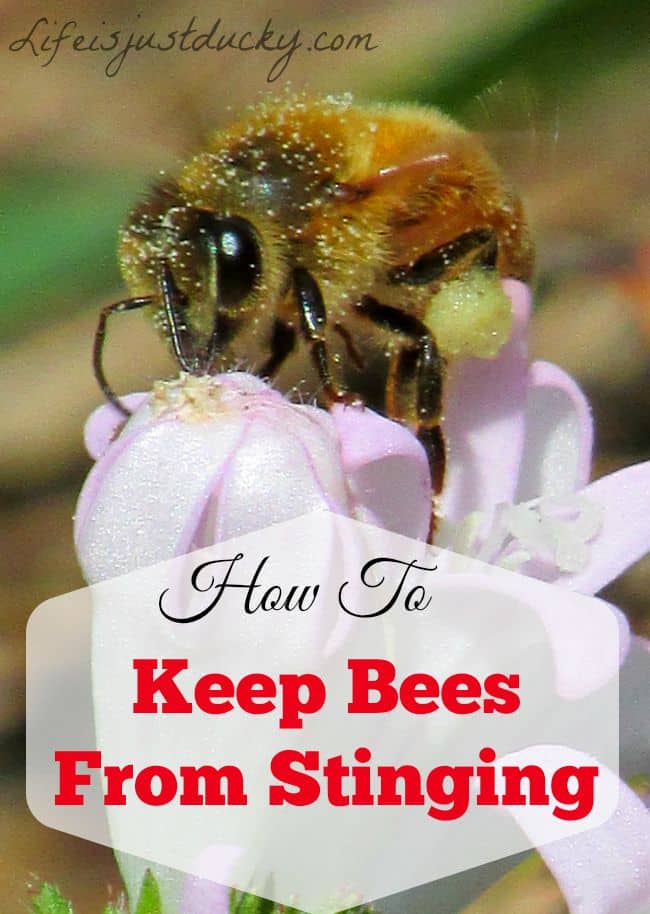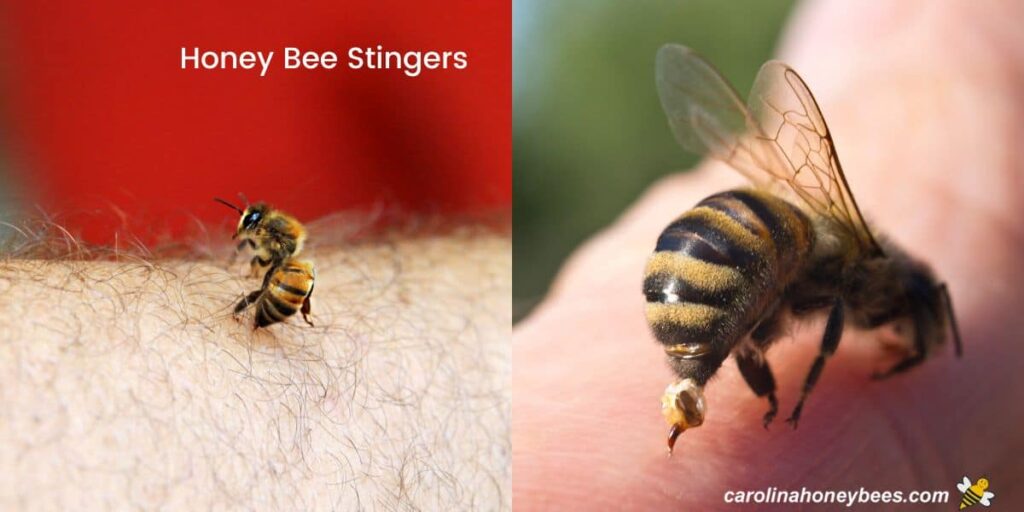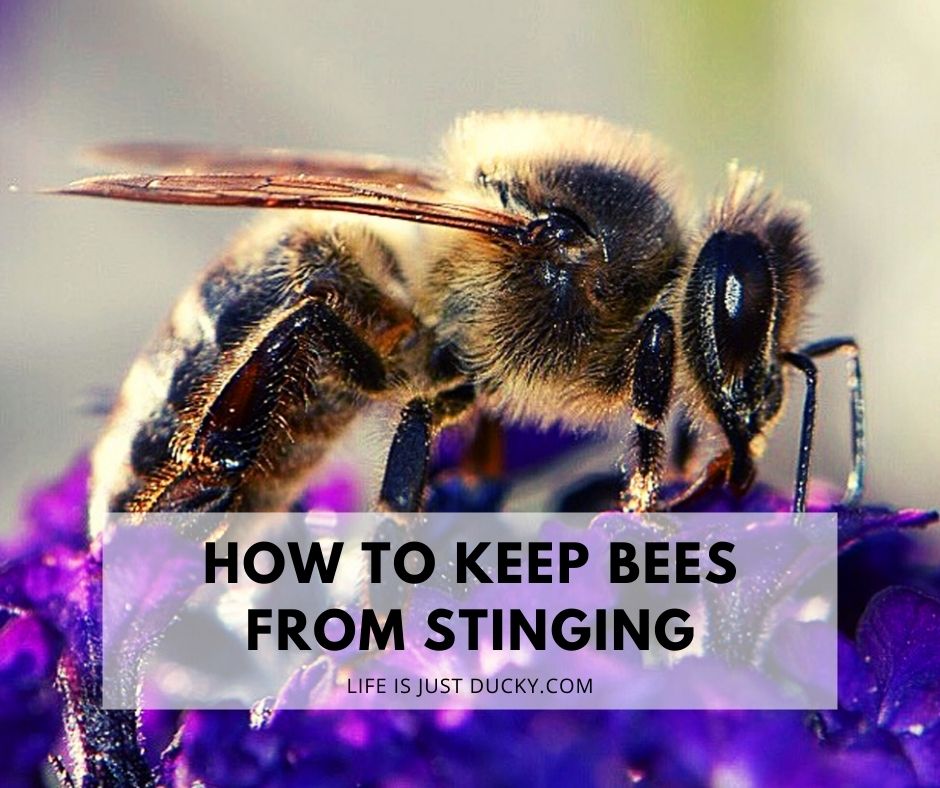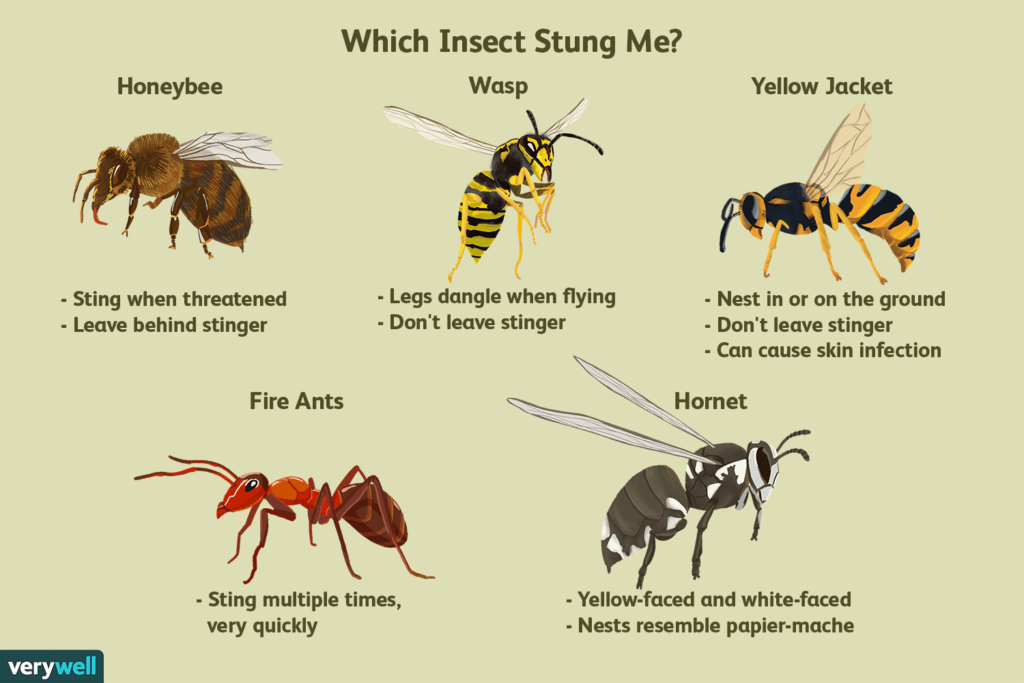
Imagine walking through a beautiful garden on a sunny day, surrounded by colorful flowers and buzzing bees. While bees are crucial for pollination and the ecosystem, their stings can be quite unpleasant. So, how can you prevent bees from stinging you? In this article, we will explore some simple and effective tips to ensure a bee-friendly experience without any bee stings. So, relax, put on your bee-proof armor (figuratively speaking), and let’s dive into the world of bee prevention!
Understanding Bees
Bees are fascinating creatures that play a vital role in our ecosystem as pollinators. Understanding their behavior and the reasons why they may sting can help us coexist with them in a harmonious and safe manner.
Types of Bees
There are various types of bees, each with its unique characteristics and roles within a colony. The most well-known type is the honey bee, known for producing honey and constructing intricate hives. Bumblebees, on the other hand, are larger and often nest in the ground or in cavities. Ground-nesting bees, such as sweat bees and mining bees, prefer to make their nests in soil or sand. By familiarizing yourself with these different types of bees, you can better identify them and understand their behavior.
Bee Behavior
Bees are typically non-aggressive creatures that prefer to go about their business. However, they may exhibit defensive behavior if they sense a threat to themselves or their colony. Bees are particularly protective of their nests and will sting if they perceive you as a danger. By understanding their natural instincts and being aware of their behavior cues, you can minimize the risk of getting stung.
Reasons Why Bees Sting
Bees sting as a defensive mechanism to protect themselves or their colony. The most common reason for a bee to sting is when it feels threatened or cornered. If you inadvertently disturb a bee or its nest, it may perceive you as a danger and respond with aggression. Additionally, bees may sting if they are swatted at or if they feel trapped, such as when they become caught in clothing or hair. It’s important to note that bees do not sting out of spite or to be malicious; they do so as a means of self-defense.
Identifying Bee Hives and Nests
Being able to recognize different types of bee hives and nests is essential for avoiding potential encounters and ensuring your safety around these insects.
Recognizing Honey Bee Hives
Honey bee hives are easily identifiable by their cone-shaped or cylindrical structures, often found hanging from tree branches or attached to buildings. These hives consist of multiple combs arranged vertically, where bees store honey and raise their young. If you come across a honey bee hive, it’s important to give it a wide berth and avoid disturbing it, as this could trigger defensive behavior from the bees.
Locating Ground-Nesting Bees
Ground-nesting bees, as their name suggests, build their nests in the soil or sand. These nests are often characterized by small openings in the ground, surrounded by mounds of excavated dirt. Ground-nesting bees can be found in various habitats, such as lawns, gardens, or sandy areas. If you identify a ground-nesting bee nest, it’s crucial to be cautious and avoid stepping on or near it, as this could provoke the bees and lead to stinging incidents.
Spotting Bumblebee Nests
Bumblebees, unlike honey bees, do not construct elaborate hives. Instead, they create nests in hidden locations such as underground burrows, abandoned rodent burrows, or even in compost piles. Bumblebee nests are difficult to spot, but you may occasionally observe a bumblebee entering or exiting a small hole in the ground or a sheltered area. If you encounter a bumblebee nest, it’s best to avoid disturbing it and give the bees their space.

Avoiding Bee Attraction
There are several steps you can take to minimize the likelihood of attracting bees and reducing the chances of getting stung.
Avoiding Floral Fragrances
Bees are strongly attracted to the scents of flowers, so it’s wise to avoid wearing strong floral fragrances when spending time outdoors. Perfumes, lotions, and even some shampoos can emit scents that mimic flower aromas, potentially drawing bees towards you. Opt for unscented personal care products or choose fragrances that are less likely to attract bees.
Wearing Suitable Clothing
When venturing into areas with a higher likelihood of encountering bees, it’s crucial to wear appropriate clothing. Opt for light-colored, long-sleeved shirts and long pants, as bees are less likely to be attracted to lighter colors. Avoid wearing clothes with bright floral patterns or dark shades that resemble the colors of certain flowers, as these may attract bees.
Being Cautious with Fragrances
Aside from floral fragrances, other scents and sweet odors can also attract bees. This includes food and beverages with fruity or sugary aromas, such as ripe fruits, sodas, or sweet snacks. Ensure that food and drinks are covered and properly sealed when outdoors to minimize the risk of attracting bees to your picnic or gathering.
Preventing Bee Encounters
While it’s important to avoid attracting bees, there are also proactive steps you can take to prevent accidental encounters and minimize the chances of getting stung.
Staying Calm and Still
If you find yourself in the presence of a bee, it’s crucial to remain calm. Sudden movements or agitated behavior can startle the bee and potentially trigger a defensive response. Stay still and avoid making any abrupt gestures that may be perceived as threatening. Remember, bees are more likely to sting when they feel threatened, so maintaining a relaxed demeanor can help prevent unnecessary incidents.
Moving Slowly
When you need to move away from a bee, do so slowly and deliberately. Rapid movements can be misconstrued as aggression and cause the bee to become defensive. Keep in mind that bees are typically focused on their own tasks and may not be interested in you unless provoked. Moving away gradually and without any sudden actions reduces the chances of attracting their attention.
Keeping Food and Drinks Covered
As mentioned earlier, sweet or strong-smelling foods and beverages can attract bees. Keep your food and drinks covered to minimize the risk of bees being drawn towards your picnic or outdoor dining area. Use lids, mesh covers, or food storage containers to prevent bees from accessing your food and potentially becoming agitated.
Being Mindful of Bright Colors
Avoid dressing in bright or flashy colors when spending time outdoors, as these colors can be attractive to bees. Bees are naturally drawn to bright floral colors, and wearing similar hues may increase the likelihood of encountering them. Opt for neutral or pastel shades that are less likely to capture their attention and reduce the chances of an unwanted interaction.
Avoiding Sudden Movements
Bee encounters can happen unexpectedly, but it’s important to resist the urge to swat or make sudden movements when a bee is nearby. Swatting at a bee may cause it to feel threatened and respond defensively. Instead, stay calm and still, allowing the bee to fly away on its own accord. By avoiding sudden movements, you can decrease the likelihood of being stung and maintain a peaceful coexistence with these important pollinators.

Protecting Your Home and Yard
Taking steps to protect your home and yard from bees can help create a safe environment for both you and these valuable insects.
Sealing Potential Entry Points
Inspect your home for any potential entry points that bees may use to access your living spaces. Fill in gaps, cracks, and holes in walls, window frames, and doors to prevent bees from establishing nests or hives inside your home. Be proactive in sealing these entry points to discourage bees from seeking shelter indoors.
Optimizing Garbage Disposal
Bees are attracted to sweet, decaying odors, which makes trash cans an enticing target. Ensure that your garbage bins have tightly secured lids and empty them regularly to prevent the buildup of attractive scents. Rinse out any sweet or sugary containers before disposing of them, as the residues can emit enticing odors. By optimizing your garbage disposal practices, you can minimize the presence of bees near your home.
Removing Standing Water
Bees require water for their survival, but standing water sources near your home can inadvertently attract them. Regularly inspect your yard for any stagnant water sources such as birdbaths, potted plant saucers, or gutters filled with accumulated rainwater. Keep these areas clean and dry, reducing the likelihood of attracting thirsty bees to your property.
Maintaining Landscaping
Well-maintained landscaping can also contribute to a bee-friendly environment. Trim bushes, shrubs, and tree branches regularly to enhance visibility and reduce potential nesting sites. Be cautious when using power tools or gardening equipment, as disturbances can agitate bees that may be present. By maintaining a tidy and well-groomed yard, you can discourage bees from establishing nests in close proximity to your home.
Creating a Bee-Friendly Space
If you are interested in supporting bee populations, consider creating a designated bee-friendly space in your yard. Plant a variety of flowering plants and herbs that are known to attract bees, such as lavender, sunflowers, and wildflowers. These plants can provide a valuable food source for bees without posing a direct threat to you and your family. By providing a suitable environment for bees, you can contribute to their well-being and overall ecological balance.
Dealing with Outdoor Activities
Engaging in outdoor activities should not be hindered by the fear of bee encounters. By taking certain precautions, you can enjoy your time outside while minimizing the risk of bee stings.
Inspecting Outdoor Areas
Before settling into an outdoor seating area or picnic spot, take a moment to inspect the surroundings for any signs of bee activity or nests. Look for bees flying around nearby flowers, foraging on the ground, or entering and exiting holes. Avoid choosing locations that seem to have an active bee presence to prevent accidental encounters.
Checking Before Sitting or Lying Down
Bees can be attracted to cozy seating areas or patches of grass for resting and relaxation. Before sitting or lying down, inspect the area carefully to ensure there are no bees occupying the spot. Look for any signs of bee activity, such as bees flying nearby or landing on surfaces. Vigilance in checking your immediate surroundings can help you avoid unintentional bee encounters.
Using Insect Repellents
Insect repellents can be a valuable tool in preventing bee stings when spending time outdoors. Opt for repellents that are specifically formulated to ward off bees or consider using natural alternatives such as citronella-based products. Apply the repellent according to the instructions provided, paying attention to the exposed areas of your body. These products can help deter bees from approaching you, providing an added layer of protection.
Keeping Food and Drinks Covered
When enjoying outdoor meals or snacks, it’s important to keep your food and drinks covered to avoid attracting bees. Utilize mesh food covers or picnic table umbrellas with netting to create a physical barrier between your food and any nearby bees. By preventing bees from accessing your food, you can minimize their interest in your gathering and reduce the chances of bee stings.
Using Bee Traps or Deterrents
If you have identified a particular area with a high bee presence and wish to deter them, you can consider using bee traps or deterrents. Bee traps are designed to attract and capture bees safely without harming them. Deterrents can include devices that emit high-frequency sound or scents that discourage bees from approaching. These tools can be effective in redirecting bee activity away from areas where their presence may pose a risk.

Responding to Bee Encounters
Despite the best precautions, there may still be instances where you find yourself in close proximity to a bee. Knowing how to respond calmly and appropriately can help minimize the risk of being stung.
Staying Calm
The most crucial element in responding to a bee encounter is to remain calm. Panicking or exhibiting sudden movements can escalate the situation and increase the chances of a bee feeling threatened and stinging. Take deep breaths, keep a relaxed posture, and remind yourself that most bees are not inherently aggressive.
Avoiding Swatting
When faced with a bee buzzing around you, it’s essential to resist the urge to swat at it. Swatting can heighten the bee’s defensive instincts and provoke it to sting. Instead, gently wave your hand or a lightweight object, such as a hat or a piece of paper, to create a breeze that encourages the bee to move away. By refraining from swatting, you can decrease the likelihood of being stung.
Slowly Moving Away
If a bee is persistently buzzing around you or getting too close for comfort, it’s important to slowly move away from its vicinity. Choose a calm and deliberate path while maintaining a relaxed demeanor. Avoid making any sudden or jerky movements that may startle the bee or provoke aggressive behavior. Moving away gradually and patiently allows the bee to disengage without feeling threatened.
Finding Shelter
In rare cases where you are dealing with an aggressive bee or a swarm, finding shelter is crucial. Seek refuge in an enclosed space, such as a building, vehicle, or a designated bee-safe area, until the bee or swarm disperses. Avoid jumping into bodies of water or dense vegetation, as bees can hover above the surface and wait for the perceived threat to resurface. By finding shelter, you can greatly minimize the risks associated with bee encounters.
Seeking Medical Attention
If you or someone else is stung by a bee and experiences an allergic reaction or severe symptoms, it’s imperative to seek immediate medical attention. Allergic reactions can vary in severity, from mild to life-threatening. Symptoms can include hives, difficulty breathing, dizziness, or swelling of the face, throat, or tongue. Recognizing the signs of a severe allergic reaction and seeking prompt medical help is crucial for managing the situation effectively.
Dealing with Multiple Stings
In rare cases when multiple bee stings occur, it’s essential to take appropriate actions to minimize the effects and care for the affected person.
Removing Stingers
When stung by a bee, it’s important to remove the stinger promptly to minimize venom injection. Use a clean, flat surface, such as a credit card or the edge of a fingernail, to scrape the stinger out in a horizontal motion. Avoid squeezing or using tweezers to pull the stinger, as this may accidentally inject more venom into the wound.
Washing the Area
After removing the stinger, cleanse the affected area with mild soap and water. Gently pat the area dry with a clean towel. This helps reduce the risk of infection and may provide some relief from the initial discomfort.
Applying Cold Compresses
To alleviate pain and reduce swelling, apply a cold compress or ice pack to the affected area. Wrap the ice pack in a thin cloth to protect the skin and apply it for 10-15 minutes at a time. This can help numb the area and provide temporary relief.
Taking Over-the-Counter Medication
Over-the-counter pain relievers such as acetaminophen or ibuprofen can be taken to alleviate pain and reduce inflammation associated with multiple bee stings. Follow the dosage instructions on the packaging and consult a healthcare professional if there are any concerns or if the symptoms persist.
Monitoring for Allergic Reactions
After multiple bee stings, it’s essential to monitor the affected individual for signs of an allergic reaction. Allergies to bee stings can range from mild to severe, and prompt medical attention is necessary if severe symptoms emerge. Monitor for symptoms such as difficulty breathing, wheezing, swelling in the throat or tongue, dizziness, or the appearance of hives. If any of these symptoms occur, seek immediate medical assistance.

Understanding Allergic Reactions
It’s crucial to be aware of the different types of allergic reactions that can occur after being stung by a bee.
Recognizing Mild Allergic Reactions
Mild allergic reactions to bee stings typically include localized redness, swelling, and pain at the sting site. These reactions are common and generally subside within a few hours or days. Applying cold compresses and taking over-the-counter pain relievers can help manage the discomfort. However, it’s important to monitor for worsening symptoms or the onset of severe allergic reactions.
Identifying Severe Allergic Reactions
Severe allergic reactions to bee stings, also known as anaphylaxis, are rare but potentially life-threatening. Symptoms can include difficulty breathing, swelling of the face, throat, or tongue, hives or itching in areas away from the sting site, dizziness, or loss of consciousness. If any of these symptoms occur after a bee sting, it’s crucial to seek immediate medical attention. Severe allergic reactions require immediate treatment, including the administration of epinephrine.
Administering Epinephrine Auto-Injectors
For individuals diagnosed with severe allergies to bee stings, carrying an epinephrine auto-injector (such as an EpiPen) is essential. If a severe allergic reaction occurs, administering the epinephrine as instructed can help counteract the reaction and buy valuable time until medical professionals arrive. It’s important for anyone carrying an epinephrine auto-injector to be familiar with its usage and to seek immediate emergency medical help after administration.
Seeking Professional Help
In certain situations, seeking professional help from emergency services, doctors, allergists, or pest control professionals may be necessary.
Calling Emergency Services
If someone experiences a severe allergic reaction to a bee sting, it’s crucial to call emergency services immediately. Severe allergic reactions can progress quickly and require urgent medical attention. Dial your local emergency number and provide as much information as possible about the situation. Stay with the affected individual and follow any instructions provided by the emergency operator.
Visiting a Doctor or Allergist
If you or someone you know has experienced multiple bee stings or has concerns about their reactions to bee stings, scheduling an appointment with a doctor or allergist is advisable. They can perform a comprehensive evaluation, assess any potential allergies, and provide appropriate guidance or treatment options. If necessary, they can also prescribe epinephrine auto-injectors and educate individuals on their usage.
Consulting with a Pest Control Professional
If your property has repeated bee infestations or you are concerned about the presence of beehives in close proximity to your home, consulting with a pest control professional is recommended. They can assess the situation, identify potential hive locations, and recommend appropriate measures to control or remove the bees safely. It’s crucial to work with professionals who prioritize sustainable, bee-friendly methods to minimize harm to these essential pollinators.
By understanding bees, their behavior, and how to prevent bee stings, you can navigate outdoor activities with confidence and ensure a peaceful coexistence with these valuable insects. Taking precautions, being mindful of your surroundings, and seeking professional assistance when needed will help you enjoy the beauty of nature while respecting the natural instincts of bees. Remember, bees play a vital role in our ecosystem, and by giving them the space and respect they deserve, we can contribute to the preservation of these remarkable creatures.
